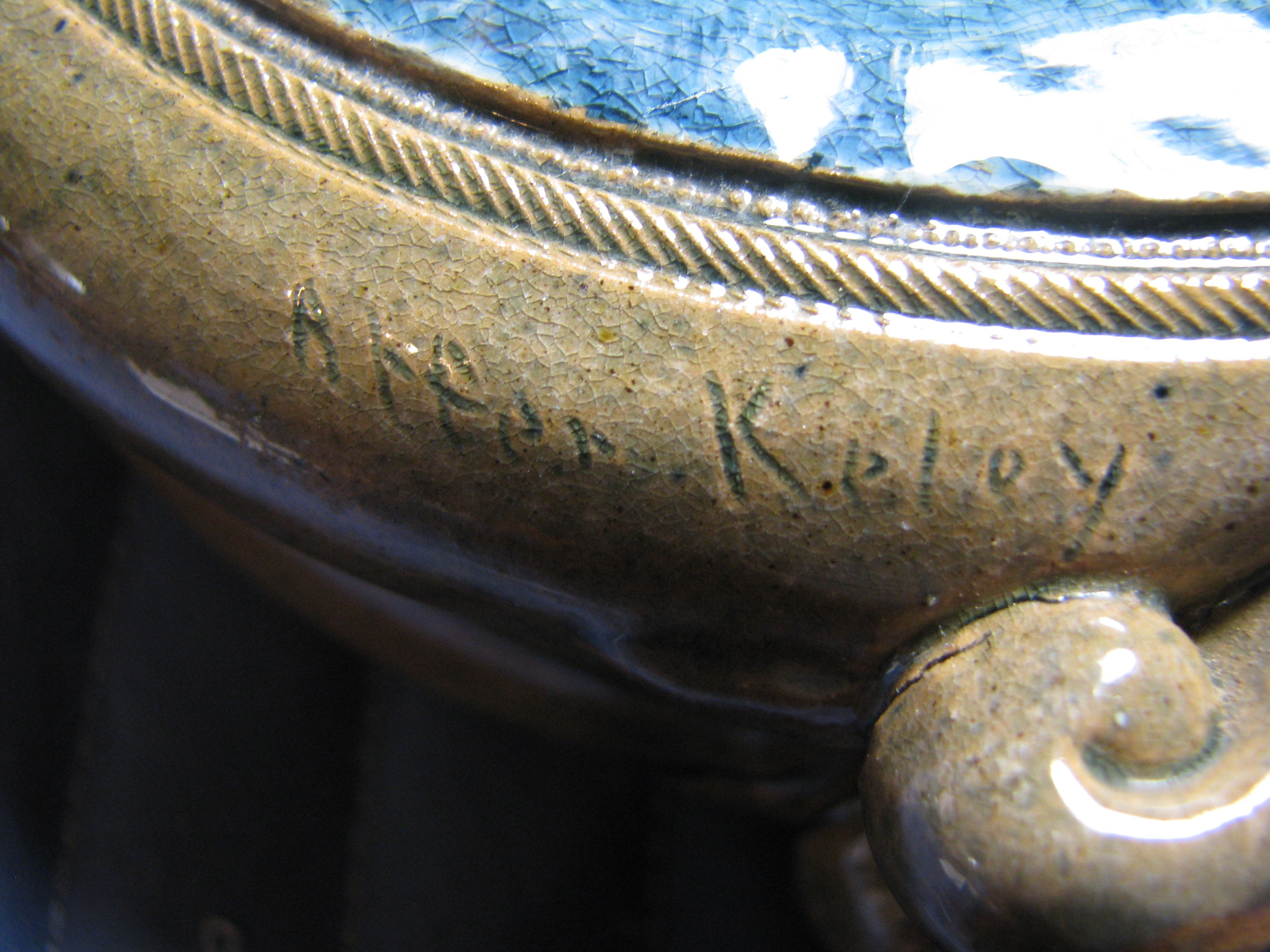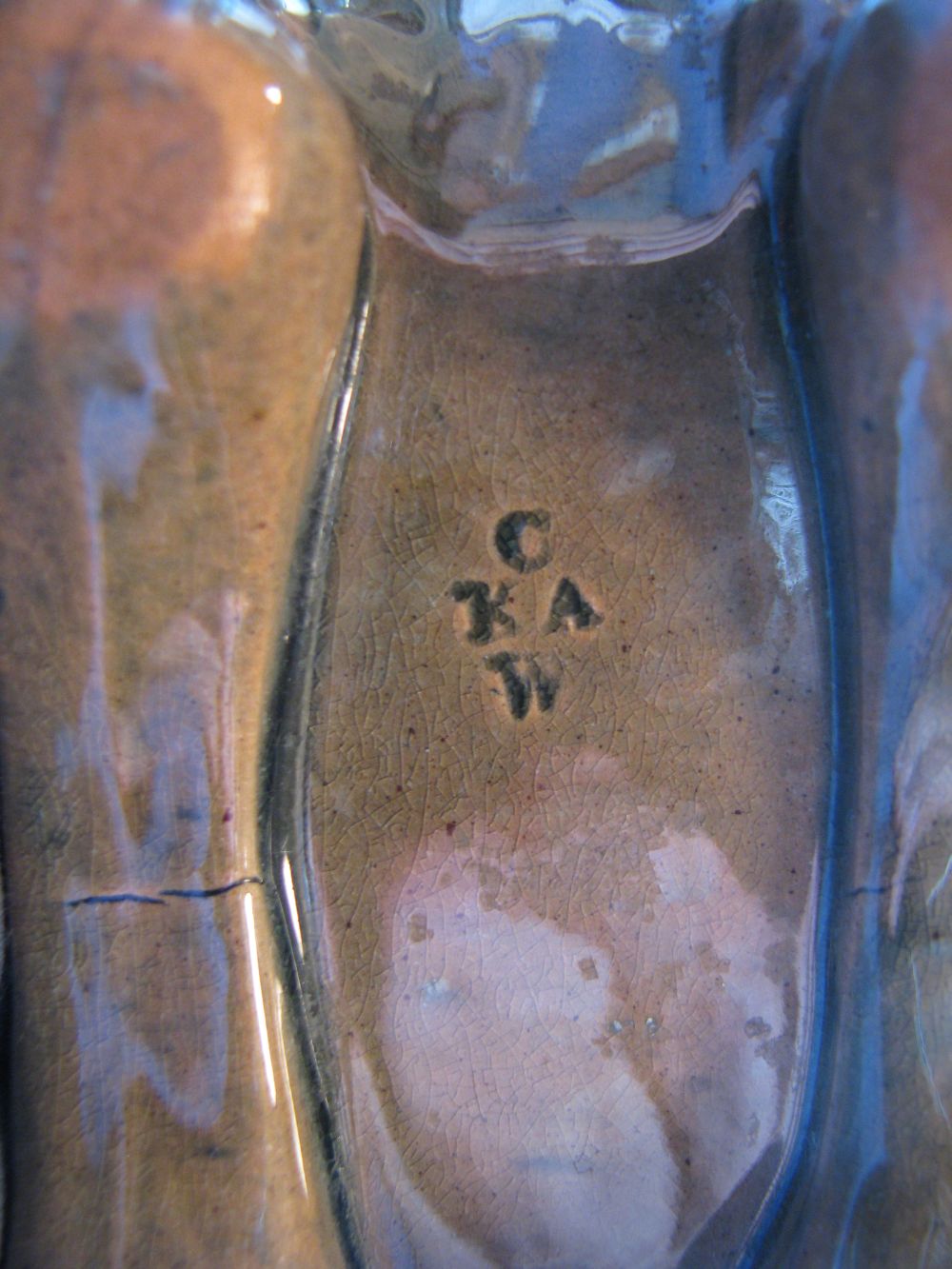Pilgrim flask
Manufacturer Chelsea Keramic Art Works American
Hugh C. Robertson
The Chelsea Keramic Art Works was the first American ceramics firm to designate itself an "art pottery." It was founded in Chelsea, Massachusetts, by members of the Robertson family, all of whom had honed their skills in the ceramics industry in Britain before coming to this country. This pilgrim vase is typical of Hugh Robertson’s work in the late 1870s and early 1880s. Although its form relates to medieval canteens, this vessel is more directly aligned with contemporary English art wares, notably vases executed at the Mintons and Doulton potteries. This flask features a central medallion depicting a mail carrier riding into town and trumpeting his arrival. Robertson, who skillfully sculpted the scene (his monogram appears at the lower right), copied the imagery from James E. Kellly’s "An Old Time Post-Boy," an illustration that appeared in the May 1878 issue of the popular magazine Scribner’s Monthly. Roberson openly acknowledged his source in a misspelled inscription at the lower edge of the vase: "after Keley [sic]." Noting that only five or six examples of this design were produced, Ceramics historian Edwin AtLee Barber described how the flasks were executed: "The figures were modelled by Mr. Hugh C. Robertson in low relief, to which an effective glaze adds depth and distance. They were worked in white clay and laid on the yellow body of the vase and then covered with a single glaze, producing the effect of a grayish blue design against a yellowish-olive or mouse-colored ground."
This vase is from the Robert A. Ellison Jr. Collection of American art pottery donated to the Metropolitan Museum in 2017 and 2018. The works in the collection date from the mid-1870s through the 1950s. Together they comprise one of the most comprehensive and important assemblages of this material known.
This image cannot be enlarged, viewed at full screen, or downloaded.
This artwork is meant to be viewed from right to left. Scroll left to view more.






